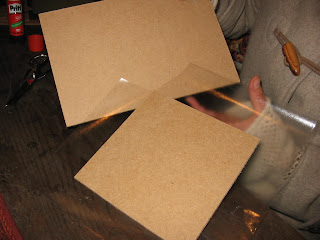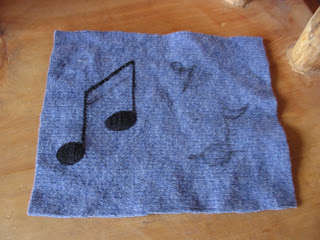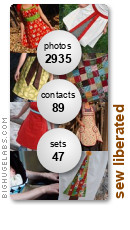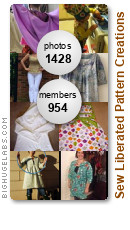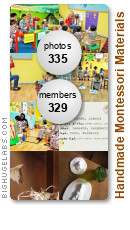Reading Classification Card Duvets
I recently added Amy Butler's sewing pattern book "In Stitches" to my craft book collection. What I found inside was well worth the $17 I spent for it at amazon. Pictured below is the photo of the "photo duvet" aka "reading classification card duvets!" The photo duvet pattern is also sold separately here.  Here is my version of the set:
Here is my version of the set:
These are really great for their purpose - protecting and attractively storing reading classification card sets. Each pouch features a cardboard/matboard square that is hidden within two layers of fabric which are then sewn closed.  This serves two purposes - it allows the children to more easily insert the cards after they have finished, and it protects them from the bumps and nicks of daily classroom usage.
This serves two purposes - it allows the children to more easily insert the cards after they have finished, and it protects them from the bumps and nicks of daily classroom usage.
One duvet is made following the pattern exactly. The second I modified to hold the labels. 

This set was made using 3 Fandex Tree sets, available at Michael Olaf. (Two for the set, and one for my reference.) These are beautiful die-cut photos of 47 tree leaves in North America. The set also shows the bark and the seeds and/or flowers of the tree. Here is one example of the card sets:
I used the font "Chopin," which I downloaded for free from this German site. Click on "search" and type in Chopin. Download the file, extract it from (I believe) zip form, and save it in your Window's font folder. I like this font because it remains pretty true to the sandpaper letters, with a few easily decipherable exceptions.
The cards were then laminated with the best gift I've ever received from my thoughtful husband, the Xyron 900. This machine is a wonder, as it allows you to laminate without having to leave an ugly edge of laminate around the card. The results look super professional. The Xyron has many other functions as well, but I have yet to try them. It's available for about $80 from amazon. You will have buy a two-sided lamination cartridge as well.
As for the nifty leaf fabric, it is one of many I have found at online at Craft Connection. You can search fabric by theme. For any given set of two reading classification card duvets, you will need either a "fat quarter" or half a yard, plus a half yard of coordinating fabric for the "inside" of the duvet.
Materials:
fat quarter or 1/2 yard of theme fabric
1/2 yard coordinating fabric
set of 4 grommets with tool (available at Joann's Fabrics)
1/4 yard of heavyweight fusible interfacing (Joann's)
coordinating thread
scissors
sewing machine
hand sewing needle
iron/ironing board
Amy's pattern
straight pins
matboard or cardboard
Here's my modification for the reading classification control cards and labels duvet:
Cut the coordinating fabric to 5 1/2" x 2 3/4." 
Fold all edges in 1/4 inch and iron. Then fold three of the edges over again, another 1/4 of an inch, and fold the right short edge over about 3/4 of an inch. Iron.
Pin to the front panel and topstitch close to the edge around all but the right edge (with the bigger fold.) 
 Continue with the pattern as written.
Continue with the pattern as written.
*Note*
If you are making folders for Audubon field guide cards, make sure you measure the finished control card and label. My guess is that you will have to make the modified duvet about 1 inch longer than Amy's pattern dictates. To do this, simply extend the length of the front and back pattern pieces by an inch when you are cutting them out. Then follow the instructions as before.
To make the label pouch on the front of the duvet for Audubon cards, extend the dimensions of the coordinating fabric to 7" by 2 3/4 " instead of 5 1/2" by 2 1/2."






